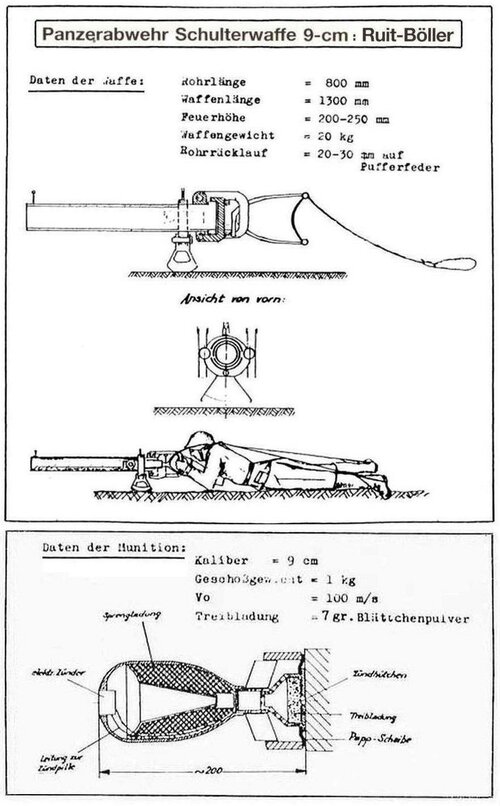klem
I really should change my personal text
- Joined
- 7 March 2015
- Messages
- 620
- Reaction score
- 1,254
Decided by the Luftwaffe, Die Luftfahrtforschungsanstalt Graf Zeppelin was commissioned to develop a shulder gun with a shaped charge effect for paratroopers, which could be carried by a single man to to fight armored cars, a powerful weapon with better performance and high penetrating power . Mauser factories were commissioned to build the weapon. The first test model was called "Ruit-Böller" because the design institute was based in Stuttgart-Ruit. (Waffen Revue 118)

